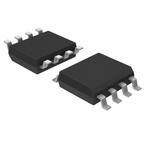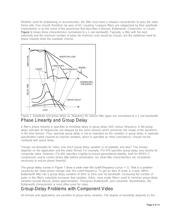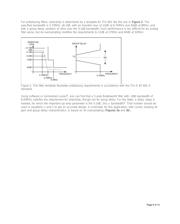下载

Maxim > Design Support > Technical Documents > Reference Designs > Amplifier and Comparator Circuits > APP 3172
Maxim > Design Support > Technical Documents > Reference Designs > UARTs > APP 3172
Keywords: active filters, video, video filters, MAX4450, MAX4451
REFERENCE DESIGN 3172 INCLUDES: Tested Circuit Schematic Description Test Data
Active Filters for Video
Jul 26, 2004
Abstract: Originally, video filters were passive LC circuits surrounded by amplifiers. Smaller, more efficient
designs can currently be achieved by combining the amplifier with an RC filter. Sensitivity analysis and
predistortion methods developed in the 1960s have, moreover, overcome the poor performance that gave
early video filters a bad reputation.
High-performance op amps and specialized software for the PC enable the design of wide-bandwidth active
filters, but those advantages do not address the requirements of any specific application. For video filters, the
particular application and signal format add nuance to each circuit design. The two major video applications
follow.
Antialiasing filters: These devices are placed before an analog-to-digital converter (ADC) to attenuate
signals above the Nyquist frequency, which is one half the sample rate of the ADC. These filters are usually
designed with the steepest possible response to reject everything above the cutoff frequency¹. For ITU-601
applications and others, such performance is achieved using analog filters combined with digital filters and an
oversampling ADC. For applications such as PC graphics, very little filtering is required.
Reconstruction filters: Also called (sinx)/x or zero-order-hold correctors, these filters are placed after a
digital-to-analog converter (DAC) to remove multiple images created by sampling, though not to remove the
DAC clock. Reconstruction filters are seldom as selective as antialiasing filters, because the DAC's hold
function also acts as a filter—an action that lowers the required selectivity, but introduces loss in the response.
The available video formats are RGB, component video, composite video, and RGB PC graphics.
All applications and formats require a video filter to be "phase linear," a condition specified by the parameter
called group delay (delay vs. frequency). The degree of phase linearity required depends on the application
and the video format. For example, antialiasing filters and component formats are more tightly specified than
are reconstruction applications and composite video. Requirements for the various applications and formats
are specified by NTSC, PAL/DVB, ITU, SMPTE, and VESA.
This article compares different filters to determine the optimum design for a given application or format. Rauch
and Sallen-Key realizations are compared for their GBW-to-cutoff ratios, using predistortion and element
sensitivity techniques to achieve accuracy in the design. Those filters to be considered are:
An ITU-601 antialiasing filter
A 20MHz antialiasing and reconstruction filter
An HDTV reconstruction filter
Filters and Their Characteristics
Page 1 of 14








